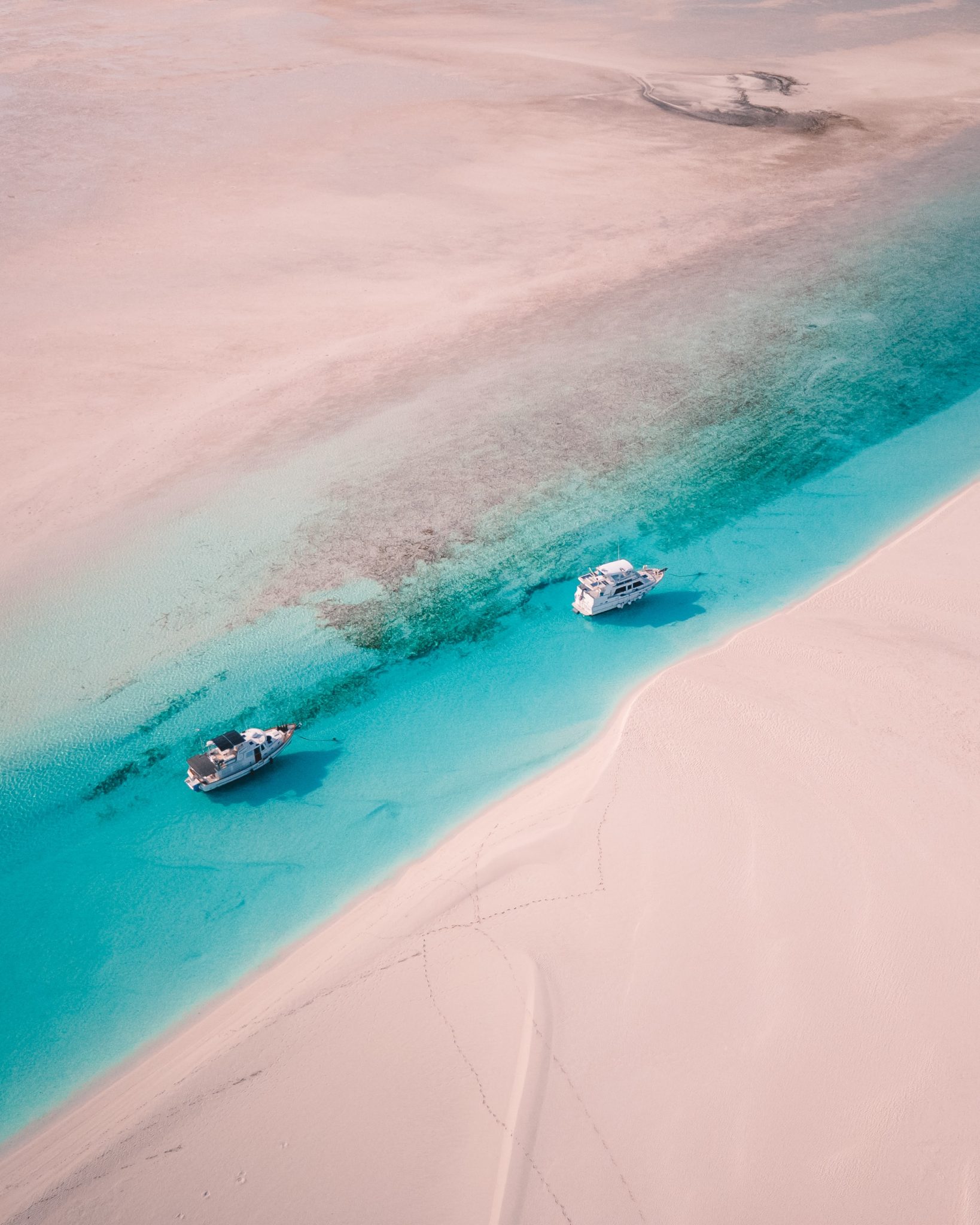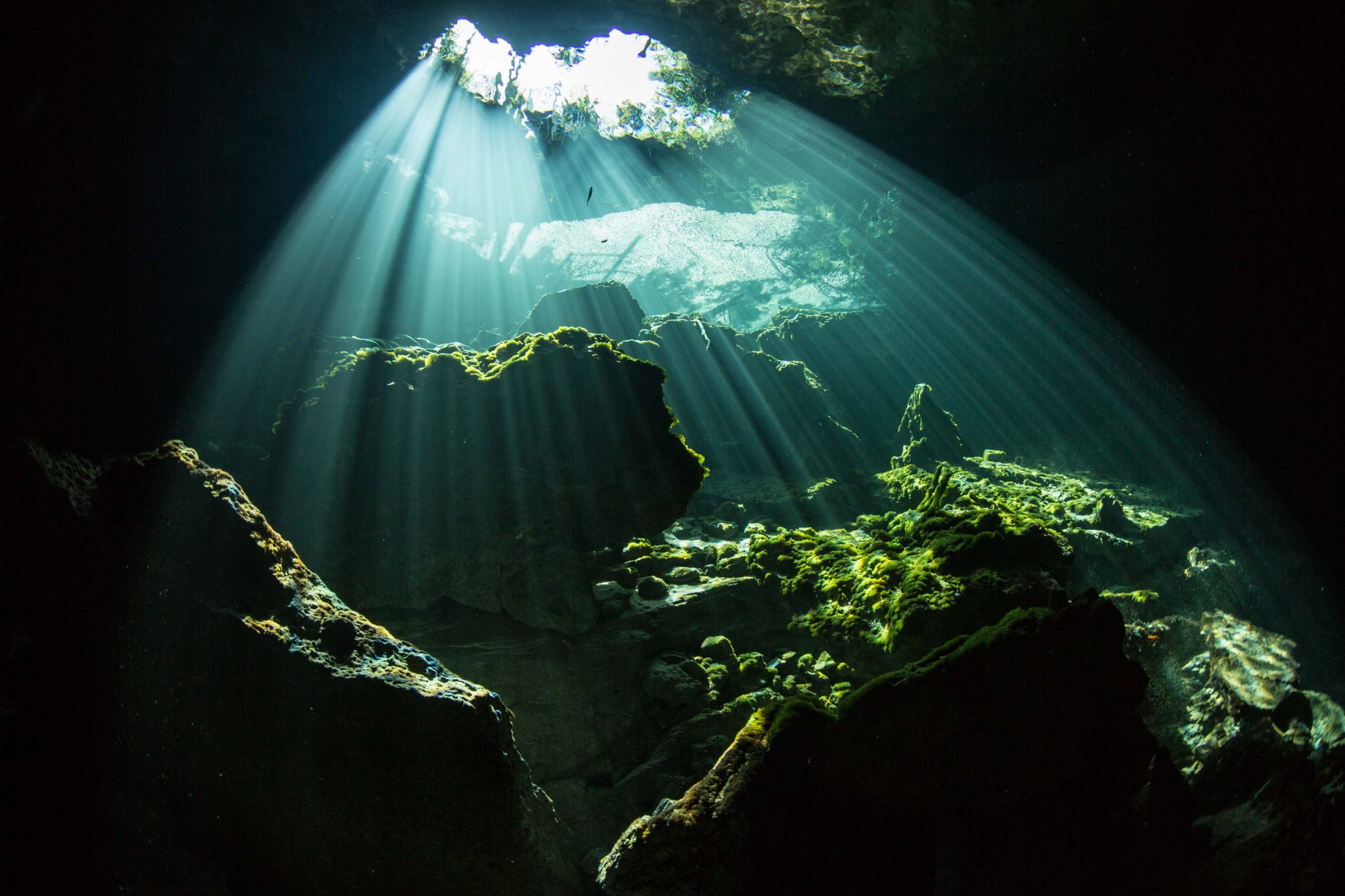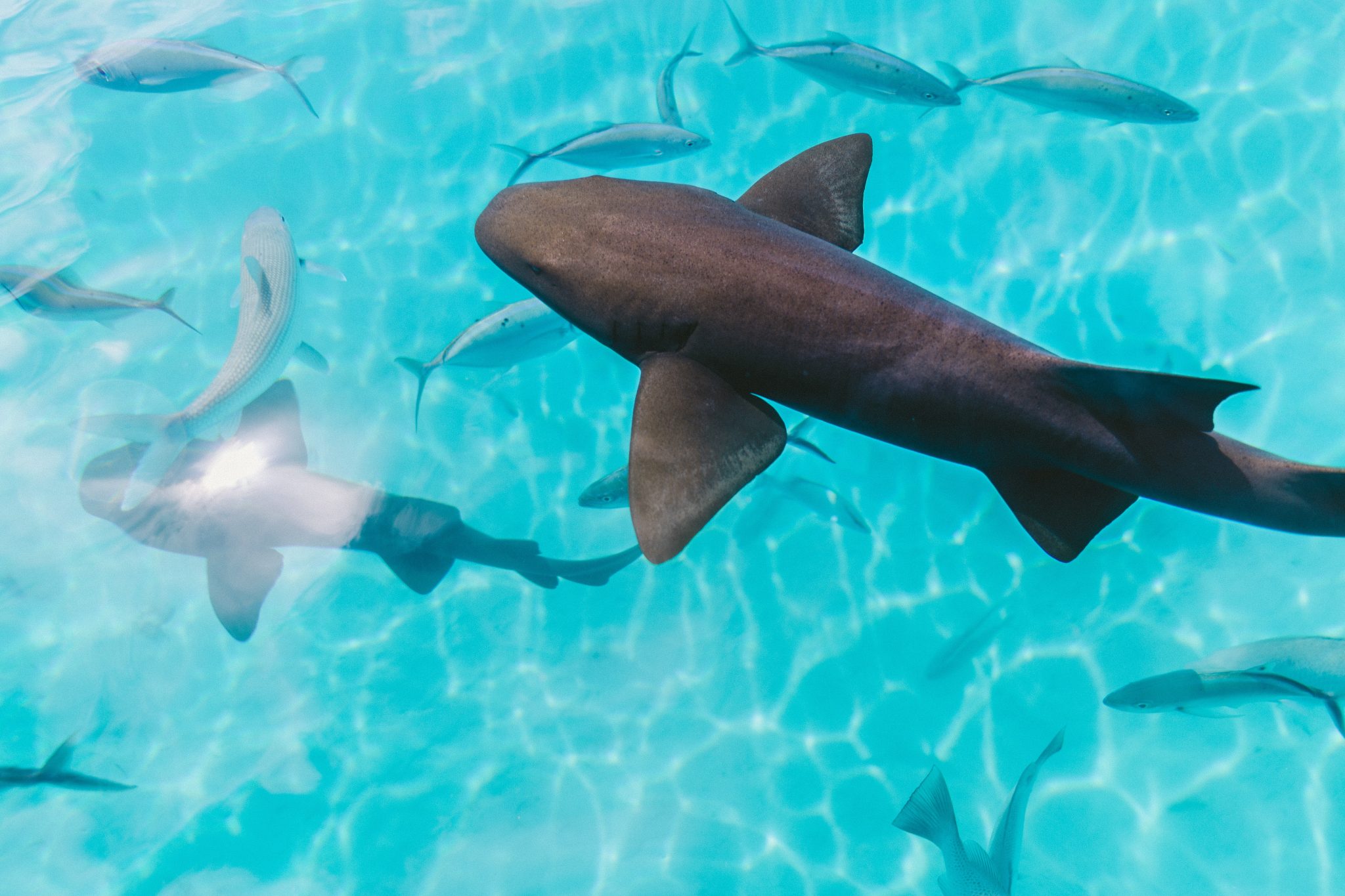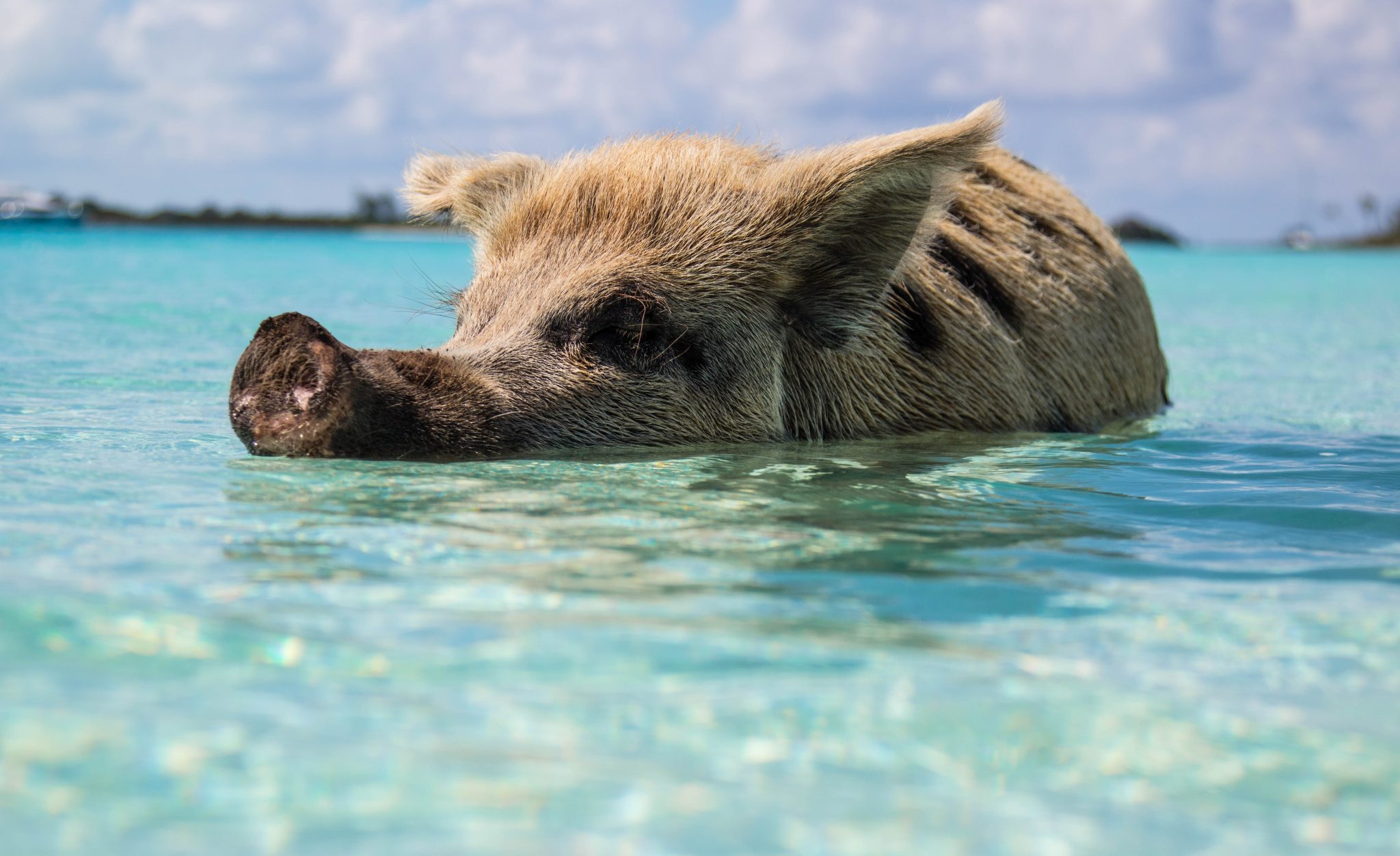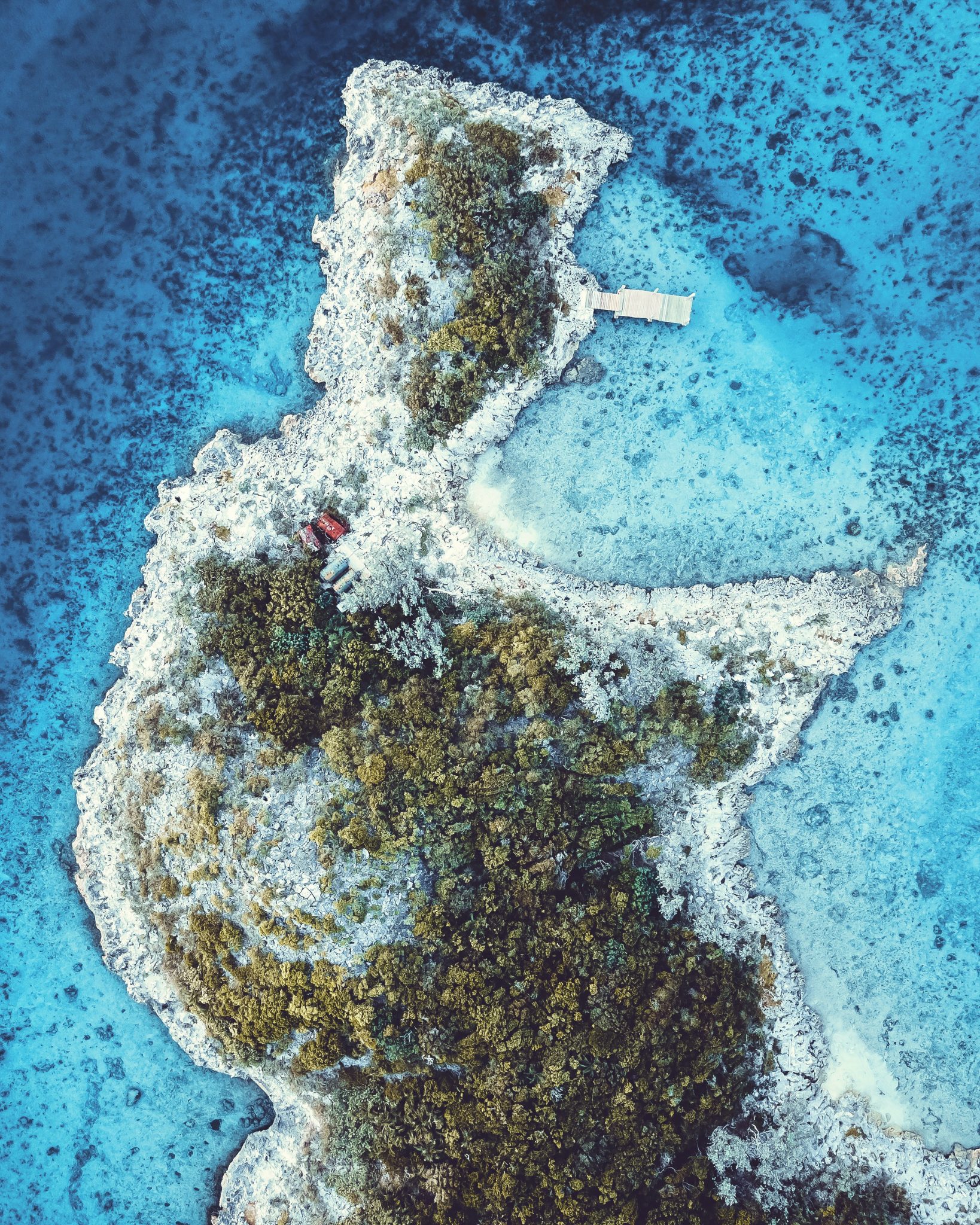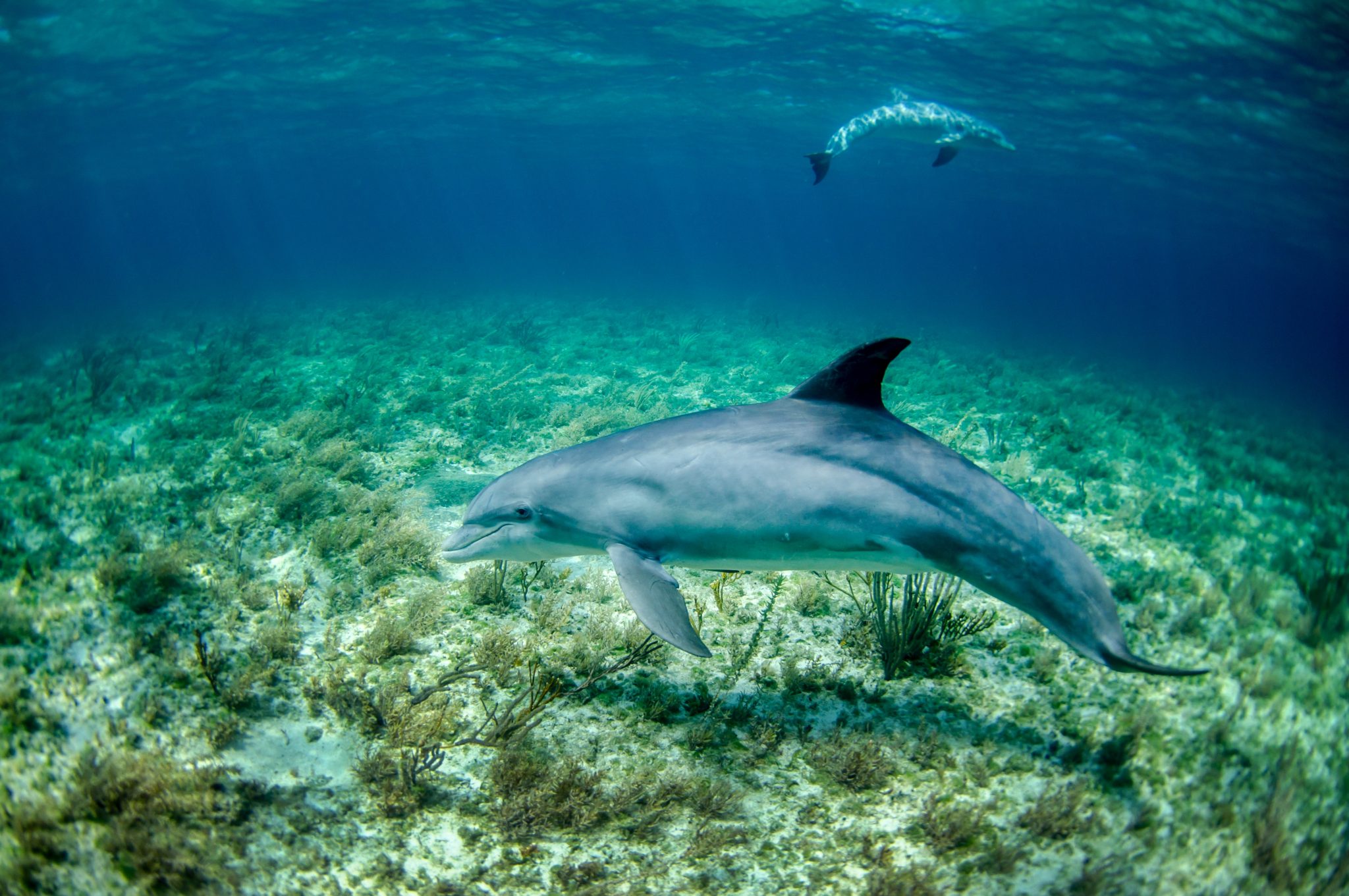Blogs
14 beginner-friendly dive sites in the Bahamas
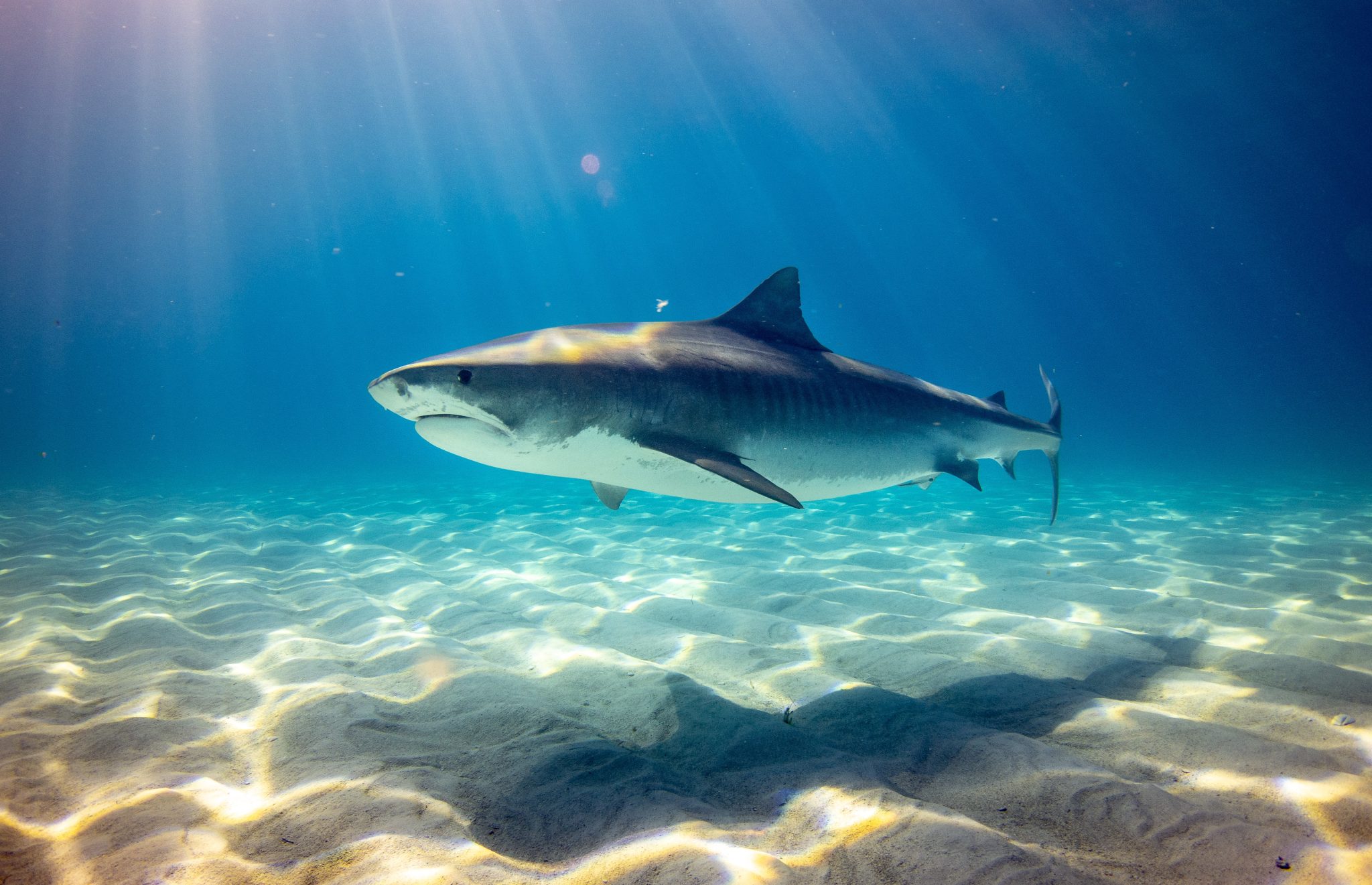
Whether you’re a seasoned diver or just getting your feet wet, the Bahamas offers a diverse array of dive sites to explore. From vibrant coral reefs to mysterious blue holes and thrilling shark encounters, this Caribbean archipelago has it all.
As a new scuba diver, you might be wondering what sets the Bahamas apart and why you should choose it as your next diving destination. The Bahamas offers not only beginner-friendly reef diving, but also the opportunity to meet some of the ocean’s most fascinating creatures, from graceful sea turtles to dolphins and stingrays. Read on for our pick of 14 beginner-friendly dive sites in the Bahamas.
Andros Island
Andros Barrier Reef: Start your Bahamian diving journey at the third-largest barrier reef in the world. This idyllic wonderland is characterized by shallow, calm waters, making it perfect for novice divers. Here, you can encounter a diverse array of marine life, from playful dolphins to Nassau grouper, marlins, sailfish, and plenty of colorful reef fish.
Blue Holes: Venture into the mesmerizing world of underwater sinkholes, such as the famous Blue Hole on Andros. With its crystal-clear waters, this site offers excellent visibility and a sense of mystery as you descend into its depths.
The Crater: Dive into an inland blue hole near Small Hope Island known as The Crater. This unique site was once the ocean floor and collapsed in on itself, revealing a captivating cave system. Here, you can witness sea turtles peacefully resting on the bottom, swim alongside graceful stingrays, and marvel at the walls adorned with vibrant corals.
Bimini
Bimini Road: Explore an underwater rock formation often compared to an ancient road. This extraordinary path of paving stones stretches along the seafloor for half a mile and is made up of large blocks, some of which are 12 feet (4 meters) across.
The origin of this structure is highly debated; some people believe it is manmade and might be the Road to Atlantis. Whether you believe that or not, the easy diving conditions and encounters with nurse sharks and stingrays make this site a fascinating dive for beginners. Dive depths are typically around 16 to 33 feet (5 to 10 meters), with water temperatures hovering around 75 – 85°F (24 – 29°C).
Cathedral: At the Cathedral dive site you can explore an ocean floor adorned with vibrant corals, creating a colorful and stunning underwater landscape.
Victory Reef: Descend to depths ranging from 30 to 79 feet (9 to 24 meters) and encounter green turtles, sharks, stingrays, and numerous reef fish at Victory Reef. The coral formations make this dive truly memorable.
Nassau
Shark Arena: If you’ve ever dreamed of coming face to face with sharks, Nassau’s Shark Arena is the place to do it. Experience shark feeding dives with trained professionals in a controlled environment, providing a safe opportunity to see various shark species up close. Dive depths typically range from 30 to 59 feet (9 to 18 meters).
Exuma Cays
The Exuma Cays offer a delightful mix of calm diving conditions and vibrant marine life.
Amberjack Reef: This shallow reef boasts colorful corals and thousands of fish, including angelfish, grouper, and barracuda. Multiple reef sharks also call this reef home. Explore this world of thriving corals in waters that range from 16 to 49 feet (5 to 15 meters) in depth.
Thunderball Grotto: Made famous by James Bond in the film Thunderball, this impressive underwater cave system is a must-visit. This jaw-dropping cave has light filtering in from holes in the ceiling, the sides, and through underwater holes. Numerous fish and vibrant corals are lit up by the sunlight, creating a mesmerizing underwater wonder for snorkelers and divers to enjoy.
And don’t forget the unique opportunity to swim with pigs at Pig Beach on Big Major Cay.
Abaco Islands
Pelican Cays Land and Sea Park: This protected area offers easy and calm diving conditions, making it perfect for beginners. Dive into a world teeming with marine life, including colorful corals and playful bottlenose dolphins. The average dive depths here range from 16 to 49 feet (5 to 15 meters), making it accessible for all skill levels.
Long Island
Dean’s Blue Hole: Plunge into the world’s deepest known saltwater blue hole, which reaches depths of over 656 feet (200 meters). It’s a very popular place for freediving, snorkeling, and scuba diving, and boasts water visibility reaching up to 98 feet (30 meters). This unique dive site is home to numerous reef fish, snappers, tarpons, sea turtles, seahorses, and rays.
Grand Bahama Island
Tiger Beach: If you love sharks, make sure you visit Tiger Beach. There you can encounter tiger sharks, lemon sharks, Caribbean reef sharks, and nurse sharks. Dive depths are typically between 20 and 49 feet (6 and 15 meters), and you simply kneel on the sand and watch the shark around you.
Cat Island
Cat Island is a paradise for divers, boasting dozens of dive sites along a reef-laced coast, far from the crowds of more popular destinations.
Columbus Point: Located at the very southeastern tip of Cat Island, this remote spot is best suited for advanced divers. However, if you’re eager to upskill, this site is worth the effort before your trip. Get a Deep Diver and Drift Diver certification under your belt and make sure you have some experience of diving in open waters.
Underwater pinnacles rise up from the ocean floor at Columbus Point, attracting large grouper and impressive sharks. Be prepared for strong currents and depths ranging from 59 to 131 feet (18 to 40 meters). Oceanic whitetip sharks are seasonal visitors and there are large game fish in the blue.
Eleuthera
Current Cut: If you have experienced divers in your group, Current Cut is a must. This dive site is thought to be one of the best drift dives in the world and offers a high-speed dive through a narrow channel with currents that can reach remarkable speeds. The water moves through this channel at up to 10 knots! Diving there is something to aspire to as you get move dives in your log book.
The Bahamas is a haven for scuba divers of all levels, including beginners. With its array of dive sites, there’s no better place to embark on your scuba diving journey. For more information about the Bahamas’ top dive spots, including dive sites reviews, check out this guide to diving in the Bahamas.
Kathryn Curzon, a shark conservationist and dive travel writer for SSI (Scuba Schools International), wrote this article.
Blogs
Alonissos: The complete diving destination (Part 1)

In June we were incredibly fortunate to be invited to dive in Alonissos, a small Greek Island in the Sporades island chain located in the North Aegean Sea. While I have long been a big fan of the Greek Islands as a great holiday destination, I had not had the opportunity to do any diving on previous visits and Mike and I were extremely excited to see what Alonissos had to offer both above and below the surface!

The Sporades are easily accessible via the airport in Skiathos (the first island in the chain), which is served by Jet2 flights from all major UK airports from May through October. Numerous ferries and charter boats make island hopping from Skiathos Town a breeze. After an hour boat ride, the picturesque port of Patitiri was a wonderful introduction to Alonissos, where we were met by our gracious hosts Kostas of Albedo Travel and Dias of Alonissos Triton Dive Center. Mike and I were delighted to be staying at the Paradise Hotel, aptly named for its stunning views over the sea and great location for walking to the waterfront.

Alonissos is beautifully situated in the National Marine Park of Alonissos and the Northern Sporades, the largest marine protected area in Europe. The surrounding seas offer fabulous marine life, including incredibly rare species such as the Mediterranean monk seal. They boast deep walls covered in gorgonians and sponges, stunning topography with caverns, swimthroughs and pinnacles, and the first accessible ancient shipwreck from 500BC!

In locations where historical sites have been reported, the waters are largely restricted, but with collaboration between government, underwater archeologists and dive centres, incredible underwater museums are being created for a truly unique diving experience. Alonissos is home to the first of these, the Ancient Shipwreck of Peristera Accessible Underwater Archeological Site. The chance to dive into history (along with reports of healthy reef life and amazing underwater topography) meant Mike and I were keen to get in the water.

Our introduction to the diving around Alonissos was at the Agios Georgios Pinnacles, in the channel between Alonissos and Skopelos. This fantastic site was named “The Chimney,’ and proved to have a huge amount to see. We got to a decent depth here (over 25m), and marvelled at a colourful reef wall with a wonderful swim through whose rocky walls were absolutely covered with life. As well as brilliant topography there was no shortage of macro life here. We saw numerous nudibranchs, five different species in total. The second dive at Mourtias reef nearby was a shallower dive along a nice wall with lots of crevices. Several moray eels and grouper called this site home. We enjoyed looking in the crevices for lobster and smaller benthic life, such as cup corals and tunicates.

Our itinerary allowed us two dives a day with afternoons left to explore the island with our hire car and evenings to enjoy the famous Greek hospitality. This proved to be a lovely mix of in-water and land based diversions.

The next days diving to the Gorgonian Gardens and Triton’s Cave was to be even better! These two stunning sites are nothing short of fabulous. The Gorgonian Gardens was a deep wall near to the Agios Georgios islands. The ever-present currents in this deep channel meant that the sea life was amazing … the namesake Gorgonian sea fans dotted the wall at a depth of 30 to 50 meters, getting ever larger the deeper we went. Above 30m was by no means less beautiful, with sponges, corals, scorpionfish, moray eels and some rare and colourful nudibranchs.

The second shallower dive of the day was to Triton’s Cave or the Cavern of Skopelos, on the east side of that island. The spectacular rock formations had wild striations both above and below the water making a truly epic topography. The cavern entrance was at 14m, and big enough for a buddy pair, winding up to 6m and passing two beautiful windows out into the blue. Emerging from the cavern, the light at the shallower depths and the incredible rock formations made for a fantastic gentle swimming safety stop and we all surfaced by the boat with massive grins.

Check out our next blog :Alonissos: The complete diving destination (Part 2)” to hear about our amazing dive on the 2500 year old Peristera Wreck!
Thanks to:
Alonissos Triton Dive Center https://bestdivingingreece.com/
Albedo Travel https://alonissosholidays.com/activities/
Paradise Hotel https://paradise-hotel.gr/
Alonissos Municipality https://alonissos.gr/en/
Blogs
Mamma Mia! Diving Skopelos (Part 2)

Our second days dive itinerary was to the famous Christoforos wreck! This is arguably the best dive in Skopelos and though only open to divers with deep diving experience, this 83m long wreck is well worth the visit.
The Christoforos sits in 43 meters of water with the deck at 32 to 35 meters. A 30m dive can give an impressive view of the wreck, though such a large wreck needs a few dives to truly do it justice. Given its ideal location just a 2 minute boat ride from the dive centre dock it is an excellent first dive of the day. The sheltered site is also diveable in all but the absolute worst weather so although deep, the water is usually clear with little to no current making it a very pleasant dive. The site is superb for technical diving and a great training site for the Tec 40 and 45 programs, offered by Skopelos Dive Center.

The Christoforos wreck was originally a collier ship built in 1950 at Grangemouth shipyard under the name “Thomas Hardie”. In 1976 she joined the Greek merchant fleet as “Christoforos”. On the 2nd of October 1983 the Christoforos was carrying 2600 tonnes of cement from Volos to Piraeus Port. During the voyage the weather turned, resulting in the ship developing a 7 degree list, whereby she changed course for safe anchorage at Panormos, Skopelos. The ship reached Panormos at 16:00 with a list of 17 degrees and water ingress to No. 1 hull. Though attempts were made to right the vessel, the crew were ordered to abandon ship at 22:00. The captain, lieutenant and the quartermaster remained to try and save the ship, but had to abandon the attempt themselves and the Christoforos finally sank at 05:30 on 3rd October 1983. She now sits upright in 43 meters of water less than 200m from shore in Panormos.

Diving has only been allowed here since 2018, so the wreck is very well preserved and a real treat to dive. Permission to dive here was granted by the authorities after lots of incredibly hard work by the Skopelos Dive Center staff. Having a fantastic wreck in such an amazing location and in excellent condition is a real privilege.

Of all the sites in Skopelos this was the site Mike and I were most keen to experience. Having kitted up and zipped across the bay to the mooring, we left the surface and followed the descent line until the wreck emerged spectacularly from the blue at 15m. She is a big and beautiful wreck, sitting as though calmly continuing her journey along the seabed. With most of her original features still intact there were points of interest everywhere, including the anchors, winches, ships telegraphs, the wheel and RDF antenna.

We found that aquatic life had colonised the ship, with schools of fish, electric blue nudibranchs, a large moray eel and the resident scorpionfish lurking inside the bridge. The Christoforos was truly a stunning wreck and despite maximising our time at depth we eventually had to say our goodbyes and begin the slow and steady return to the surface.

After a superb morning dive we had the afternoon to do a little sightseeing of the island, with a trip to the church of Agios Ioannis Kastri made famous by the blockbuster movie “Mamma Mia!”. Mike and I spent a happy afternoon pootling around in our little hire car before meeting up with Lina from Skopelos Dive Center. An underwater archeologist as well as a dive professional, Lina had offered to show us a rather special attraction, the Christoforos shipwreck Digital Spot public information and awareness centre.

A fantastic initiative made possible from the collaboration of the government and hard work of the staff at Skopelos Dive Center is the “Digital Spot” in Agnontas port. This information center has a number of displays on the history of the Christoforos wreck, the process by which the wreck was allowed to be opened to the public for diving tourism, other sites of historical interest in the area, a video of the wreck and the best bit, a virtual reality dry dive experience! The beauty of the VR system is that non diving members of the family can see what you have seen on the wreck, or you can see areas that you may not have explored during the dive due to time or depth limitations. It was a truly immersive experience and a great addition to the dive itself.

After a wonderful day we celebrated our last evening on the island with an exquisite meal in Skopelos Town with fabulous views over the town and bay, washed down with the excellent local wine. The lamb with lemon and potatoes was a meal which I could happily eat every day for the rest of my life!

Skopelos is an island that truly has it all. The diving is excellent, the landscape is beautiful with plenty of non diving activities, the locals friendly and the food and drink superb. Given how accessible it is as a holiday destination it has avoided becoming overcrowded and even in peak season offers a fun yet relaxing atmosphere. We highly recommend giving Skopelos a visit. We will certainly be back again!
Thanks to:
Municipality of Skopelos (https://skopelos.com/)
Skopelos Dive Center (https://sporadesdiving.gr/)
Ionia Hotel (https://www.ioniahotel.gr/en)
Dolphin of Skopelos (https://dolphinofskopelos.com/)
Ta Kymata restaurant (@takymata)
The Muses restaurant (https://www.facebook.com/TheMussesMousses/)
Aktaiov resturant (https://skopelos.com/listings/aktaion-taverna/)
-

 Blogs2 months ago
Blogs2 months agoDiving With… Nico, Ocean Earth Travels, Indonesia
-

 News1 month ago
News1 month agoMurex Bangka Announce New Oceanfront Cottages & Beachfront Dining
-

 Blogs2 months ago
Blogs2 months agoA new idea in freediving from RAID
-

 Marine Life & Conservation1 month ago
Marine Life & Conservation1 month agoIceland issue millionaire whale hunter a licence to murder 128 vulnerable fin whales
-

 Marine Life & Conservation2 months ago
Marine Life & Conservation2 months agoThe Shark Trust Great Shark Snapshot is back
-

 News3 months ago
News3 months agoCharting New Waters; NovoScuba Goes Global with the Launch of their Revolutionary Dive Training Agency!
-

 Gear News1 month ago
Gear News1 month agoNew Suunto Ocean – a dive computer and GPS sports watch in one for adventures below and above the surface
-

 Marine Life & Conservation Blogs2 months ago
Marine Life & Conservation Blogs2 months agoBook Review: Plankton


